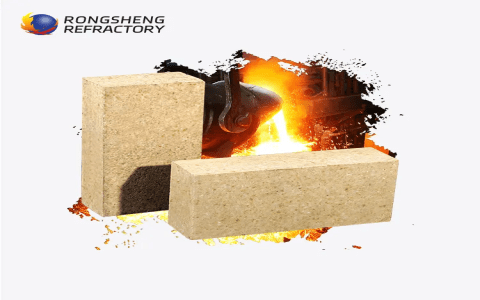Alright, let’s talk about this here “refractory material” stuff. Don’t go getting all fancy on me, it ain’t rocket science. It’s just stuff that can take the heat, ya know? Like, real, real hot.
What is this refractory stuff anyway?


Well, it’s like this, them things are made to stand up to fire, real hot fire, and stuff that eats away at things, like acid and such. You wouldn’t use a regular ol’ pot to melt metal, would ya? Nah, you need somethin’ tough, somethin’ that won’t melt or break down. That’s what this refractory stuff is all about.
Think of it like the rocks around your fireplace, but way, way tougher. They use this stuff in places where things get hot as heck, like them big ol’ furnaces where they make steel, or in them fancy glass factories. Keeps things from melting down, you see?
- Toughness is Key: This stuff ain’t no good if it crumbles under pressure or heat. It gotta be strong, real strong. They look at how much it weighs, how many holes it’s got in it, and how much it can take before it breaks. It’s gotta hold up, ya hear?
- What’s it Made Of?: Mostly, it’s made from stuff dug outta the ground, like dirt and rocks, but real special kinds. They mix ’em up just right, bake ’em real hot, and bingo, you got somethin’ that can take the heat. They use things like aluminum and magnesium, stuff that can stand the fire. They got names longer than my arm, but don’t you worry ‘bout that. Just know it’s tough stuff.
What Kinds Are There?
Now, they got different kinds, see? Some are shaped like bricks, real heavy ones, you can stack ’em up to make walls and floors for them furnaces. Others are like powder, or cement, you mix ’em up and pour ’em where you need ’em. It all depends on what you’re tryin’ to do.
Why’s it Gotta Be So Tough?
Well, imagine you’re meltin’ down metal, that stuff gets hotter than a summer day in July, and it’s heavy too. If your furnace walls ain’t up to snuff, they’ll just melt or crack, and then you got a big ol’ mess on your hands, and probably a fire too. That’s why this refractory stuff is so important. It keeps things safe, keeps things runnin’ smooth.
How Do They Know It’s Good?
They got all sorts of ways to test this stuff. They heat it up, cool it down, put pressure on it, even try to eat away at it with chemicals. They gotta make sure it can handle whatever it’s gonna face. It’s like when you’re buyin’ a new pot, you thump it a bit, make sure it’s solid, right? Same idea, just way more scientific.


Where Do You Find This Stuff?
You ain’t gonna find it at the hardware store, that’s for sure. This stuff is special. They make it in big factories, places that know how to handle them hot temperatures and all that. Then they ship it off to where it’s needed, to the steel mills, the glass factories, and all sorts of other places you wouldn’t even think of.
So, to sum it up…
Refractory material is just tough stuff that can take the heat. It’s used to make furnaces and other things that gotta stand up to real high temperatures and nasty chemicals. It’s made from special rocks and dirt, and they test it real good to make sure it’s strong enough. It’s important stuff, keeps things runnin’ and keeps folks safe. And that’s all there is to it, really. Nothin’ fancy, just good, solid stuff.
What makes it so special?
Well, this special material can handle heat like you wouldn’t believe. They got somethin’ they call “melting temperature” and this stuff can take thousands of degrees before it even starts to sweat. It’s also got this thing where it don’t let heat pass through it too easy, keeps the heat where it needs to be and saves energy too. And it’s gotta be strong so it don’t break or wear out fast.
Them Different Types Again
Remember I said there were different kinds? Well, they got names like “fireclay” and “high alumina” and other such things. Don’t let that scare ya. It just means they’re made of different stuff and good for different things. Some are better for real high heat, some are better for resistin’ them chemicals, and some are just plain tougher. It’s all about pickin’ the right tool for the job.


So there you have it. Refractory material ain’t so complicated after all. It’s just tough stuff for tough jobs, keepin’ things hot and safe. Now, don’t you go forgettin’ all this!
Tags: [Refractory Materials, High Temperature Materials, Heat Resistant Materials, Industrial Materials, Furnace Materials, Ceramics, Oxides, Material Properties, Melting Temperature, Durability]



